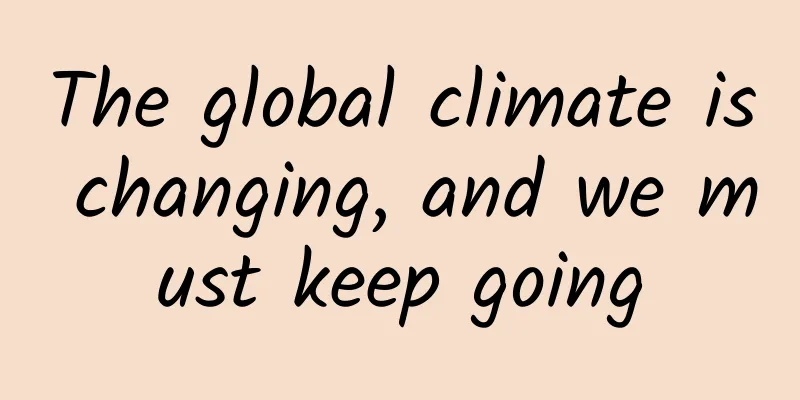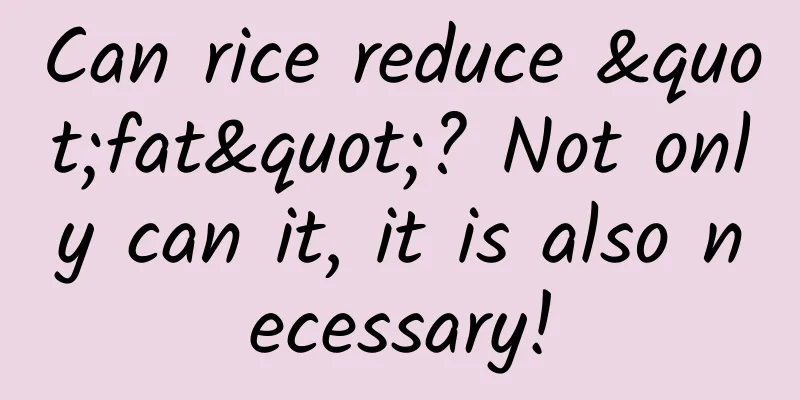The global climate is changing, and we must keep going

|
Produced by: Science Popularization China Author: Chen Kexin (Institute of Atmospheric Physics, Chinese Academy of Sciences, Beijing Tao Shiyan Meteorological Development Foundation) Producer: China Science Expo Food is the material basis for human civilization. The simplest definition of food security is that anyone can afford and buy enough food to maintain survival and health at any time. Throughout the 5,000-year history of China, which is rooted in agricultural civilization, food is the foundation of national security. As the saying goes: The foundation of a country is to have enough food. In the current era of economic globalization, ensuring food security is not limited to increasing food production. International agricultural trade is also an important means for many countries and regions to maintain food supply. However, global food security is always facing many threats: population growth, climate change, frequent wars, international market turmoil... Let us take wheat, one of the three major grains, as an example to deeply understand the complex and arduous issue of ensuring food security in the context of climate warming. Humans are born in the world and live together with plants and trees: Human society under the “domestication” of wheat Among all crops, wheat is the earliest food crop cultivated by humans. However, historians believe that it was not humans who domesticated wheat, but wheat that domesticated humans. More than 10,000 years ago, the cultivation of wheat led to the transformation of human society from fishing, hunting and gathering to a settled life. Over the years, with the changing of seasons and the continuous labor, the lifeblood of human society has long been deeply rooted in the land. The mural depicts the farming scene of the ancient Egyptian people (Photo source: Egypt king) Today, wheat is an important source of carbohydrates in the human diet, providing 20% of protein and calories for about 35% of the world's population . Wheat is a cool-loving crop originating from temperate zones, with low requirements for water and heat, and the widest planting area of all crops. The countries with the highest wheat production in the world are mostly mid- and high-latitude countries with temperate climates , such as China, Russia, the United States, France, Canada, Germany, etc. However, in some subtropical climate regions, as long as the local climate's water and heat conditions can meet the requirements for wheat growth, they can also have large areas of wheat arable land , such as the Deccan Plateau in India. The share of global wheat production by country from 2000 to 2020 (Source: Faostat, database of the Food and Agriculture Organization of the United Nations) Due to the uneven distribution of the world's population, different climate conditions and productivity levels in different regions, some countries have surplus wheat production, while many countries are unable to be self-sufficient and need to rely on international food trade to feed their people. Therefore , as an important grain crop in the world, wheat not only has the largest planting area, but also ranks first in international trade volume among grain crops . The global wheat supply chain, to a certain extent, reflects the differences in climate conditions and agricultural production levels among different countries and regions. If the weather is not favorable, the granary will not be full: the impact of climate warming on food security Since the Industrial Revolution, the large amount of carbon dioxide emitted by humans in the past 100 years has significantly increased the global average temperature. Since 1970, the global average surface temperature has risen at a rate unprecedented in the past 2,000 years . Such abnormal temperature changes are gradually breaking the earth's ecosystem that has reached stability after billions of years of evolution, and will have an impact on global food security. Changes in global average surface temperature compared to the 20th century average temperature (Image source: National Oceanic and Atmospheric Administration NOAA) Some optimists believe that global warming may not be a bad thing. Because rising temperatures can allow crops to be grown in high-latitude areas that were not suitable for farming, expand the area of grain cultivation, and thus increase grain production. Such arguments are not nonsense. Over the past 60 years, my country's overall precipitation and temperature have been rising, and the northern boundary of the double-season rice planting area originally located in the south has expanded nearly 300 kilometers to the north. The 856 Farm in Heilongjiang, Northeast China, was once a wheat field at the beginning of reform and opening up, but now it is a rice field. The northern boundary of my country's winter wheat planting has expanded 100-200 kilometers northward from the Great Wall. Climate warming has caused my country's planting belt to move northward. The main crop grown on Heilongjiang No. 856 Farm has changed from wheat to rice. Image source: (China News Service Heilongjiang Network) But from a more macroscopic perspective of time and space, we will understand that these prosperous scenes are only short-lived and local. For example, the climate in northwest China is dry, and the Taklimakan Desert, the largest desert in China, is located there. Since the beginning of the 21st century, many lakes have appeared in the Taklimakan Desert. The phenomenon of "warming and wetting" in the northwest region has caused China's planting areas to "move north and expand westward", not because the local climate has really become wetter. A large part of the reason is that the global average temperature has increased, the amount of snow and ice melting in the mountains of the Qinghai-Tibet Plateau has increased, resulting in an increase in the net flow of downstream rivers. However , the Special Report on the Ocean and Cryosphere in a Changing Climate (IPCC) released in 2019 pointed out that climate change-driven glacier melting will cause an increase in surface runoff in the early stage, but as the glacier water storage is exhausted, the water supply will continue to shrink or even be completely lost . It can be seen that only by looking at the temporary prosperity objectively and rationally, and taking effective measures to actively respond, can we achieve the goal of seeking benefits and avoiding harm and making rational use of resources. IPCC Special Report on the Ocean and Cryosphere in a Changing Climate (Image source: Intergovernmental Climate Reporting Committee IPCC) Because the interlocking biological chains are interconnected and interdependent, climate warming is endangering global food security to a certain extent in various forms. Rising temperatures and the northward shift of the planting belt have also caused the area of agricultural pests and diseases to expand northward; warmer soil will release more heavy metals that will be absorbed by plants, endangering food quality and safety; the northward shift of the climate zone and the expansion of cultivated land will further undermine the stability of the regional ecological environment... Moreover, frequent extreme weather events under global warming are breaking records and breaking limits again and again. Old farmers often say: "Preventing wind and rain is like preventing theft", but the unpredictability of abnormal weather is increasing, and the resilience of agricultural production is facing greater shocks and pressures again and again. We have just experienced the most extensive global high temperature and drought event in the past decade. Many countries in the northern hemisphere have suffered from record-breaking or even record-breaking heat and drought disasters. Many wheat exporting countries in Europe are facing a "half-break" dilemma of tight water and electricity resources and wheat fields due to the simultaneous high temperature and drought. As the world's largest wheat exporter, the United States has been affected by extreme drought since spring, and spring wheat production in many areas has dropped sharply, and domestic wheat prices have risen significantly. On July 13, 2022, a large area of the world was affected by extreme high temperature weather (Photo source: Faostat, database of the Food and Agriculture Organization of the United Nations) Many statistical and forecasting studies have clearly pointed out that the local agricultural product benefits brought about by future climate warming cannot make up for its adverse impact on overall agricultural production. In addition, the latest research shows that some early crop models underestimated the adverse impact of climate change on food production, which means that the food security of more people than expected will be threatened by climate change. International trade competition may intensify the threat of climate change to global food security China has only 7% of the world's arable land, but feeds 21% of the world's population. The creation of such a "world miracle" is inseparable from the hard work of the Chinese people, the stable development of agricultural technology and the strong support of the state for agricultural reform. In addition to these factors, the historic transformation of the Chinese people from "eating enough" to "eating well" is also due to the fact that China has made full use of international market resources in the context of trade globalization and improved the structural contradictions of China's grain through moderate grain imports and exports. China's corn, wheat and soybean imports increased significantly from 2010 to 2022 (Photo by Yukiko Nozaki, 2021) Take wheat as an example. China is not only the world's largest wheat producer and consumer, but also a major international wheat trader . In the early days, China's wheat production was mainly aimed at solving the problem of food and clothing for the people, with per-acre yield as the primary measurement indicator. However, with the improvement of people's living standards, people's demand for high-quality wheat has increased year by year. With such a change in demand, China's ordinary wheat production is in excess, while there is a gap in high-quality wheat production. A farmer is spraying pesticides on a wheat field in Nantong, Jiangsu (Photo source: Global Times) In the international agricultural market, the United States exports a large amount of low-priced high-quality wheat with its advanced and popular agricultural mechanization level and high agricultural subsidies. Considering the shortage of agricultural land and high labor costs in my country, importing wheat from the United States can not only meet the needs of the domestic market but also reduce the country's grain expenditure. At the same time, in order to avoid the situation of "low grain prices hurting farmers", my country still collects a large amount of ordinary wheat grown by farmers and sells old wheat for feed to neighboring countries such as South Korea, the Philippines, and Vietnam. This not only meets the demand for feed grain in these countries, but also protects the actual interests of Chinese farmers. my country's wheat imports in 2021 (Photo source: China Grain Network) Although international trade is beneficial to China's solution to the problem of structural contradictions in grain, we must also realize that the market is a double-edged sword. Fluctuations in the international grain market will affect the food security of various countries through trade relations. In the future, as the climate changes, global food security will face higher risks and challenges. Recently, the latest research results of Zhang Tianyi's research team from the Institute of Atmospheric Physics of the Chinese Academy of Sciences, published in the academic journal "On Earth", show that if the global average temperature rises by 2°C, changes in wheat yield distribution and competition in the international trade market will expand the contradiction between global wheat supply and demand. In the face of this challenge, the study emphasized that improving the food self-sufficiency of various countries is the key to ensuring food security, and has received widespread attention from mainstream science and technology and news media at home and abroad. Distribution of changes in global wheat production (a) and prices (b) relative to current averages under current and 2°C warming climates (Image source: Zhang et al. 2022) The study shows that climate warming will lead to more prominent imbalances in the global wheat industry chain. As the northward expansion of the temperate climate and the increase in atmospheric carbon dioxide concentrations can promote plant photosynthesis to a certain extent, the average global wheat yield may increase by about 1.7%. However, the increase in yield mostly comes from more developed wheat exporting countries and regions in mid- and high-latitudes, while wheat production in some countries and regions located at low latitudes that need to import large amounts of wheat has dropped significantly. Under the general rules of the international trade market, when wheat importing countries reduce production, their increased demand for wheat will stimulate the rise in wheat prices in the international grain market, thereby increasing the grain import costs of these countries. Researcher Zhang Tianyi stated: "The increase in grain import costs will further hinder the construction of food self-sufficiency in wheat importing countries and solidify their passive situation in food security, which will aggravate the imbalance in the overall global food security situation." Distribution of changes in global wheat production (c) and prices (d) relative to current averages under current and 2°C warming climates (Image source: Zhang et al. 2022) Faced with the problem that climate change will deepen the distribution differences of crops in the world, thus bringing greater food security pressure to developing countries, some developing countries have realized the importance of improving food self-sufficiency. For example, in December 2021, the National Remote Sensing and Space Science Bureau of Egypt and the Institute of Agricultural Resources and Agricultural Zoning of the Chinese Academy of Agricultural Sciences signed a memorandum of cooperation on the China-Egypt Joint Laboratory for Green Agricultural Development to carry out international cooperation in smart agriculture in the face of future climate challenges and enhance the climate resistance of wheat. Building a community with a shared future for mankind, jointly addressing the food security crisis When humans planted the first wheat seed in the soil, they hoped to fill their stomachs. But more than 10,000 years have passed, and hunger has never disappeared. Today, a large number of people in the world are still suffering from hunger. According to research by the United Nations Food and Agriculture Organization, as many as 811 million people in the world often go to bed hungry, accounting for nearly 9.9% of the world's population, according to the "State of Food Security and Nutrition in the World 2021" report. The hard times that the older generation of Chinese people experienced when they were hungry made us deeply understand the importance of a country's food self-sufficiency. (Image source: earth.org) In the face of the current challenges posed by climate change to food security, while ensuring the food security of 1.4 billion Chinese people, we call on countries to strengthen agricultural technology cooperation, enhance the ability of countries vulnerable to global climate change to ensure food security, and build a more humane world food system through a stable food supply chain and a fair regulatory system, so that the world is no longer hungry. References: [1] Zhang, T.*, van der Wiel, K.*, Wei, T., Screen, J., Yue, X., Zheng, B., Selten, F., Bintanja, R., Anderson, W., Blackport, R., Glomsrød, S., Liu, Y., Cui, X., Yang, warming, One Earth, 5, 907-916. [2] Zhang, T.*, Li, T., Yang, X., Simelton E. 2016. Model biases in rice phenology under warmer climates. Scientific Reports, 6, 27355. [3] Diffenbaugh, NS, Singh, D., Mankin, JS, Horton, DE, Swain, DL, Touma, D., Charland, A., Liu, Y., Haugen, M., Tsiang, M., and Rajaratnam, B. (2017). Qualifying the influence of global warming on unprecedented extreme climate events. Proc. Natl. Acad. Sci. USA 114, 4881–4886. [4] Yukiko Nozaki,2021. China's grain imports rapidly growing-expectation for the rise of innovation triggered by soaring prices. Mitsui & Co. Global Strategic Studies Institute Monthly Report. [5] IPCC 2019 Special Report on the Ocean and Cryosphere in a Changing Climate [6] Hong Kai. Food security issues in Southeast Asian countries under the influence of the world food crisis and China’s countermeasures[J]. Southeast Asian Studies, 2008(6):6. [7] NOAA National Centers for Environmental Information, State of the Climate: Monthly Global Climate Report for June 2022, published online July 2022, retrieved on August 28, 2022 from https://www.ncei.noaa.gov/access/monitoring/monthly-report/global/202206/supplemental/page-1. [8] https://earth.org/global-food-security/ [9] http://sh.cma.gov.cn/sh/qxkp/qhbh/gnwdt/202201/t20220128_4478381.html [10] https://www.weforum.org/agenda/2022/07/heat-waves-climate-change-europe-northern-hemisphere/ [11] http://www.workercn.cn/c/2022-07-16/7101658.shtml [12] https://ricetoday.irri.org/crop-models-underestimate-climate-change-impact-on-global-rice-production/ [13] https://www.guancha.cn/internation/2021_08_09_602296.shtml [14] https://www.scientificamerican.com/arabic/articles/news/warming-increases-wheat-price/ |
<<: The idea of “hypersonic flight” came from Chinese scientists!
>>: High fever, cough, aches and pains, flatulence...what exactly do viruses do to your body?
Recommend
The fission gameplay of Weibo traffic diversion!
I have been in the Internet circle for 6 years an...
Why is the phone still not easy to use even though it has such a high performance score?
Is the performance of the mobile phone good? Just...
These are some of the details on Apple's new Mac operating system
[[137240]] At the Worldwide Developers Conference...
Qihoo 360 Tan Xiaosheng: The Tough Job——CTO
At the "CTO Training Camp" event hosted...
Jiebao linkage system course "Leopard Brother Short-term Practical System Course" and "Jiebao Trading System Advanced Edition" video tutorial
Course Contents: 1. [Xiaojie Night News] Jiege Tr...
18 open source components used by NetEase News iOS version
[[134800]] Third-party open source libraries and ...
Case analysis: How to use video information flow in the e-commerce industry?
As the trend of short videos continues to deepen,...
How to efficiently acquire seed users? Baidu's senior operations manager shares these 4 methods with you!
This is a relatively new product and there are no...
20 satellites in one rocket! The successful launch of Jielong-3 injects new momentum into commercial aerospace!
At 3:24 on December 6, the Jielong-3 carrier rock...
Monetization activities: How to make users willingly pay for your products?
Below, let’s start with the premise of monetizati...
Weekly Science and Technology Award|Promising Photocatalytic Materials
In 1972, "Nature" published a paper pro...
Why do we have to develop a hydrogen bomb, he said -
He is the recipient of the "Medal of the Rep...
How much does it cost to develop a self-service group buying app?
Self-service group buying mini program, how much ...
4K is not yet popular, and the prospects for 8K TV are unclear
In the display market, people have never stopped ...
Why is mobile banking important to the banking industry?
With the popularity of mobile banking, people hav...









